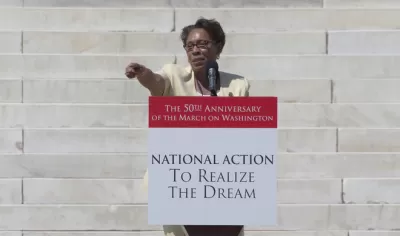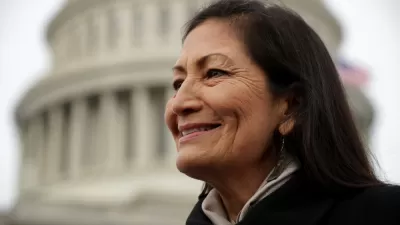Surprise, frustration, and optimism mingle in response to left-field choice.

In an unexpected move, the Biden transition team tapped Rep. Marcia Fudge to be the next HUD Secretary. Fudge represents the 11th District in Ohio, which includes much of Cleveland.
Fudge had lobbied for the Secretary of Agriculture position, and last month told Politico that it was too bad Black cabinet picks tended to be relegated to Labor or HUD. However, Tom Vilsack, former Secretary of Agriculture under President Obama, will return to that role, and Fudge has said she would be willing to step into whatever role she is needed for, even telling the Cleveland Plain Dealer that HUD was actually her “close second” pick.
Fudge has little experience with housing policy or housing-related Congressional committees and has not made it an explicit top priority of her time in office. In her interview with the Plain Dealer she appeared hard-pressed to name specifics of what has happened recently at HUD, good or bad. She has, however, focused on addressing issues of poverty, hunger, civil rights, and health, and housing advocates who have worked with her in Ohio say that they believe she understands how housing stability and affordability fits into that picture.
There are two strains of reaction to Fudge’s nomination in the housing world. One is a feeling that the choice by Biden of someone with little experience who clearly preferred another role reflects that he does not take housing policy as seriously as was hoped and that qualifications are taking a back seat to other considerations in the cabinet process (and those other considerations are not representation, since putting Fudge, a Black woman, at Ag would not have prevented his putting a qualified leader of color at HUD as well).
The choice is “breathtaking in its complete dismissal of urban issues and housing issues—given what we’re about to face” in terms of the mounting eviction and foreclosure dangers of the pandemic says James DeFilippis, a professor at the Edward J. Bloustein School of Planning and Public Policy at Rutgers University who has worked in the nonprofit housing sector and follows housing policy closely. “And it’s unfair to her, who by all accounts is a very thoughtful member of Congress.”
....
FULL STORY: Housing Field Reacts to Marcia Fudge HUD Nomination

Maui's Vacation Rental Debate Turns Ugly
Verbal attacks, misinformation campaigns and fistfights plague a high-stakes debate to convert thousands of vacation rentals into long-term housing.

Planetizen Federal Action Tracker
A weekly monitor of how Trump’s orders and actions are impacting planners and planning in America.

In Urban Planning, AI Prompting Could be the New Design Thinking
Creativity has long been key to great urban design. What if we see AI as our new creative partner?

How Trump's HUD Budget Proposal Would Harm Homelessness Response
Experts say the change to the HUD budget would make it more difficult to identify people who are homeless and connect them with services, and to prevent homelessness.

The Vast Potential of the Right-of-Way
One writer argues that the space between two building faces is the most important element of the built environment.

Florida Seniors Face Rising Homelessness Risk
High housing costs are pushing more seniors, many of them on a fixed income, into homelessness.
Urban Design for Planners 1: Software Tools
This six-course series explores essential urban design concepts using open source software and equips planners with the tools they need to participate fully in the urban design process.
Planning for Universal Design
Learn the tools for implementing Universal Design in planning regulations.
Gallatin County Department of Planning & Community Development
Heyer Gruel & Associates PA
JM Goldson LLC
City of Camden Redevelopment Agency
City of Astoria
Transportation Research & Education Center (TREC) at Portland State University
Jefferson Parish Government
Camden Redevelopment Agency
City of Claremont





























